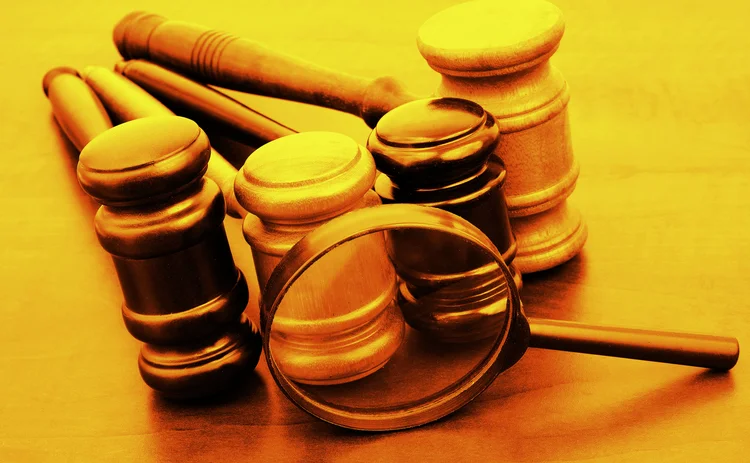
CDS market revamp aims to fix the (de)faults
Proposed makeover for determinations committees tackles concerns over conflicts of interest

Credit default swaps have long had an image problem. Those less familiar with the market’s intricacies may associate it with the global financial crisis or recall the Vatican questioning its ethics.
But even those intimately involved in the market have expressed unease over an unheralded but critical part of its operation – the process for adjudicating credit events.
Credit default swaps are designed to pay out when an issuer’s actions negatively impact the value of its debt: for example, defaulting on a bond or loan. Before contracts can pay out, a committee decides on whether a credit event has occurred.
The committee is made up of sell-side and buy-side members, some of whom may own the contracts in question – leading to accusations of conflicts of interest.
Concerned parties have recently been able to voice their grievances in an ongoing review of the credit derivatives determinations committees (DCs) and their process for ruling on potential swap triggers.
That review – which organisers have likened more to a periodic health check than emergency surgery – aims to address any conflicts.
The devil, as always, will be in the details, but with few market participants directly involved in the determinations process, long-held perceptions of improper behaviour can matter just as much as the reality.
The proposed changes to institute stricter compliance policies and to introduce both independent members and an independent panel would make for the largest change to the committees since their 2009 founding. They’d also represent a shift from the process’s existing safeguards.

The architects of the determinations process assumed a traded market needed active participants who understood the product and were invested enough in its future to reach correct decisions. With members required to meet a minimum level of CDS trading to serve on the committee, governing rules have focused on how to manage conflicts, not remove them.
For one, bringing together the largest traders in a market where transactions create an equal number of buyers and sellers all but guarantees there will be arguments on both sides of an issue, especially when members cannot recuse themselves. Key decisions need 80% of voting members to support one of two binary outcomes, and the failure to reach the threshold pushes the decision to an external panel. Public voting records make members accountable for their decisions.
Additions to the governing rules in 2016 further bolstered these supports. The updates require committee delegates to be independent of certain business lines, such as credit trading, hedging, lending and investing. They also require member firms to establish written procedures to identify and manage conflicts of interest relating their employees’ involvement in determinations committees. But the changes specifically do not preclude members from knowing their own firm’s economic position on questions before the committee.
If consensus is a measure of success, the safeguards have largely worked – few decisions have failed to meet the supermajority threshold. But for some the DC arrangements no longer appear tenable, and as an independent report noted earlier this year, regulators are concerned with the determinations process.
“While recognising the benefits of the DC process, most of the regulators we spoke to identified [conflicts of interest] as their primary concern in relation to the DCs. They emphasised that the fact that there has been no regulatory intervention to date should not be taken to imply that they are happy with the status quo,” wrote Linklaters partner Simon Firth, who conducted the report.
“In our opinion, it is this aspect of the DC process that presents the greatest risk,” he added, citing the potential ability for a serious standards breach to impact market confidence and encourage regulatory intervention.
Regulators are not unfamiliar with the determinations process. They played a role in its creation as they pushed the market to standardise contracts and enable central clearing and later studied the process through the International Organization of Securities Commissions.
According to a 2012 summary from the International Swaps and Derivatives Association, “The DC rules were developed following commitments to regulators as part of a public drafting process administered by Isda and supported by such regulators.” Regulators were also shown interim drafts of the rules, the document notes.
More than a decade later – and in a financial world more sensitive to potential market abuse following the Libor benchmark-rigging scandal – priorities appear to have changed.
Firth proposed three ways to better address conflicts: appoint up to three independent members to the committees with one acting as a committee chair; enhance minimum compliance requirements; and allow the DCs to refer questions on credit events and successor entities by simple majority to an independent panel of lawyers.
A recently released survey revealed general support for the ideas, with more respondents in favour of independent members than stricter compliance procedures or an independent panel.
The proposals are not without their share of concerns. Some worry that the potential presence of retired judges as independent members would lead others on the committee to defer to the judges’ assessments, a fear Firth rejects in his report. He further rejects concerns that the ability to refer decisions to a separate panel would disincentivise the committees from engaging with challenging questions.
Some have questioned the need for additional compliance to manage conflicts, preferring to rely on existing procedures.
Isda says it will work with the industry and policymakers over the next year to present proposed changes to the DCs, who according to their rules are responsible for enacting changes.
Only users who have a paid subscription or are part of a corporate subscription are able to print or copy content.
To access these options, along with all other subscription benefits, please contact info@risk.net or view our subscription options here: http://subscriptions.risk.net/subscribe
You are currently unable to print this content. Please contact info@risk.net to find out more.
You are currently unable to copy this content. Please contact info@risk.net to find out more.
Copyright Infopro Digital Limited. All rights reserved.
As outlined in our terms and conditions, https://www.infopro-digital.com/terms-and-conditions/subscriptions/ (point 2.4), printing is limited to a single copy.
If you would like to purchase additional rights please email info@risk.net
Copyright Infopro Digital Limited. All rights reserved.
You may share this content using our article tools. As outlined in our terms and conditions, https://www.infopro-digital.com/terms-and-conditions/subscriptions/ (clause 2.4), an Authorised User may only make one copy of the materials for their own personal use. You must also comply with the restrictions in clause 2.5.
If you would like to purchase additional rights please email info@risk.net
More on Our take
UBS’s Iabichino holds a mirror to bank funding risks
Framing funding management as an optimal control problem affords an alternative to proxy hedging
Trump 2.0 bank supervision: simpler but no soft touch?
Republican FDIC vice-chair Travis Hill wants more focus on financial risk instead of process
Lots to fear, including fear itself
Binary scenarios for key investment risks in this year’s Top 10 are worrying buy-siders
Podcast: Alexei Kondratyev on quantum computing
Imperial College London professor updates expectations for future tech
Quants mine gold for new market-making model
Novel approach to modelling cointegrated assets could be applied to FX and potentially even corporate bond pricing
Thin-skinned: are CCPs skimping on capital cover?
Growth of default funds calls into question clearers’ skin in the game
Quants dive into FX fixing windows debate
Longer fixing windows may benefit clients, but predicting how dealers will respond is tough
Talking Heads 2024: All eyes on US equities
How the tech-driven S&P 500 surge has impacted thinking at five market participants








